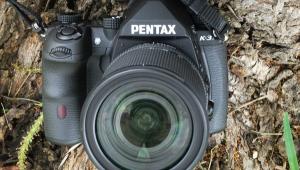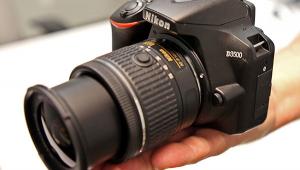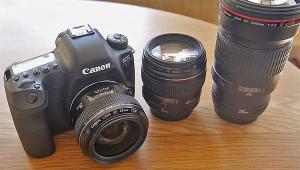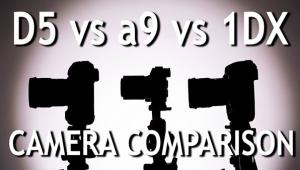Nikon D600 DSLR Review
The Nikon D600 is the smallest of the company’s full-format sensor cameras yet due to the same seals and protections as the Nikon D800 and its very robust body, it can be used outdoors under rugged and rainy weather conditions.
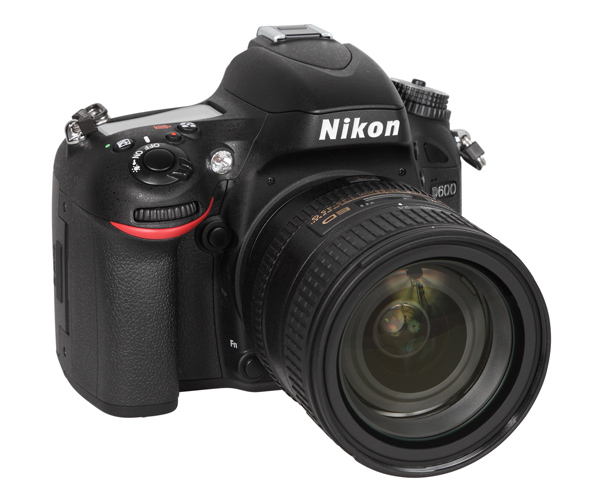

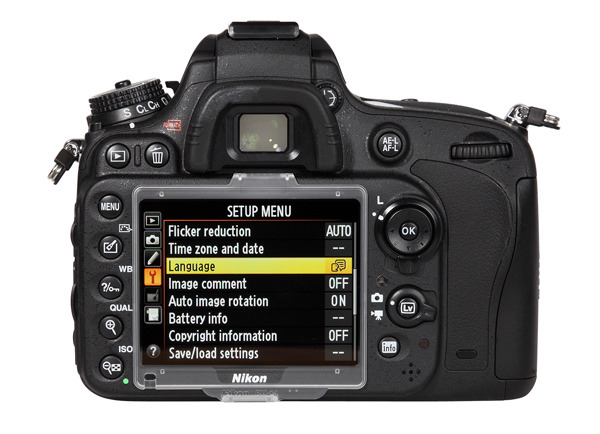
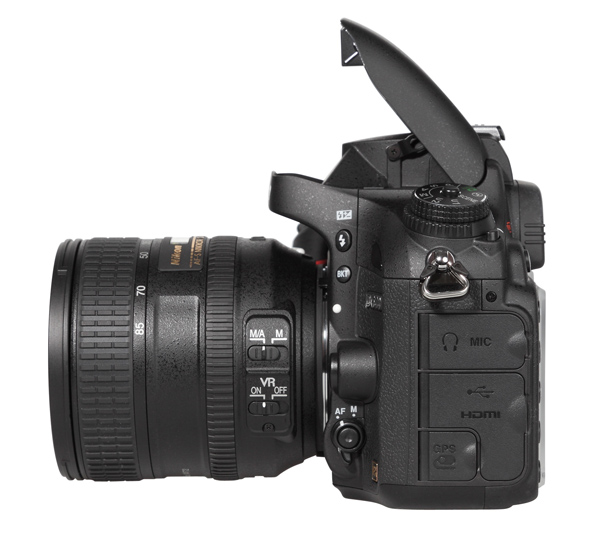
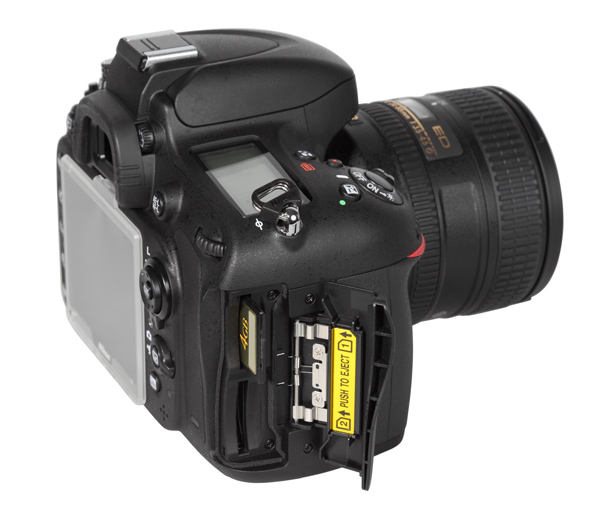
The camera has a standard SLR design with a bright and large optical viewfinder. In addition, it offers a live preview on its 3.2” LCD screen, which has a high resolution of 921,000 RGB dots. The LCD displays a bright and brilliant image even when looked at from the side. It is a fixed monitor covered by a translucent plastic cover that protects the screen from dust and scratches.
Like a professional SLR, the D600 has a large status LCD on the top and two setup dials to change image parameters. It uses a large mode dial on the top to change standard exposure modes like P, S, A, and M, to offer a complete automatic mode (green camera symbol), and to allow access to scene modes. In addition, the photographer can set and use two user-defined settings, indicated by “U1” and “U2” on the mode dial. Below this dial an additional setup ring can be used to change image modes like single shot mode, continuous mode (two speed settings) and to activate the self-timer. In combination with many function buttons on the back and on the top, this allows for fast and intuitive set up of all parameters.
The Nikon D600 is able to record Full HD video with a resolution of 1920x1080 pixels and 25p mode. In 720p mode it is able to record up to 50 progressive frames per second. The camera allows the user to change all exposure settings in video mode and to send a “clean signal” (without overlay information) to the HDMI port. This can be used to record uncompressed video instead of the H.264 mode MOV files which are normally created by the D600. For image and video recording the camera offers two SD card slots which can use all kinds of SD card media, including state-of-the-art UHS-I SDHC and SDXC cards.
Image Quality
Color: The D600 creates very natural and realistic-looking colors. The saturation is nearly perfect (101 percent). Only blue colors show a slightly higher saturation due to a higher magenta rate. The automatic white balance system worked well under all lighting conditions. The gray patterns in the test chart are nearly perfectly centered; only the very bright gray field shows a tendency toward a yellow and green direction. This is also noticeable in the bright background in the portrait shot. Skin tones are reproduced very precisely, which sometimes causes a slightly “pale” look, especially compared to portrait shots taken with cameras that create a more saturated look (Sony or Canon cameras, for example).

Sharpness: The camera showed a very good result in our sharpness and resolution tests. With a maximum of 3879 lines of sensor resolution of 4016 lines in picture height, the camera yielded a very good result. Due to the default image style setups, some images may look a little bit soft. Using different settings in the image style menu or using Raw mode brings a highly sharp and crisp look to the images. These images show that sharpness without the artificial look of intense sharpness filtering or algorithms often characterized in results from compact cameras or SLRs with an APS-C-sized sensor.

Noise: The Nikon D600 showed clear and nearly noise-free images in shots taken at ISO 1600. In shots with higher ISO speed settings we noticed some slight luminance noise and a touch of color noise. Nevertheless, even those images have a very clean look. The luminance noise factor stays way below 1.0 up to ISO 3200 with only ISO 6400 displaying a luminance noise factor of 1.16. Color noise is visible in ISO 3200 and ISO 6400 images.

Pro
+ Nikon’s new entry model into the world of full-frame sensors
+ Excellent image quality
+ Small and compact body (compared to former full-format sensor cameras)
+ Robust body
+ Full HD video, including clean HDMI output
Con
- Missing swivel monitor
Image Tech is where we publish web-exclusive lab reports on cameras. To read the reports please go to the Shutterbug homepage at www.shutterbug.com and click on the Image Tech tab on the top navigation bar. New reports are published frequently, so check Image Tech for updates.
The Nikon D600 has a list price of $2099.95. For more information, visit: www.nikonusa.com.
Lab results and test images by BetterNet, our TIPA-affiliated testing lab. Edited by George Schaub.
- Log in or register to post comments


